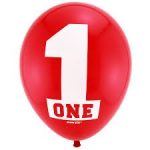People often wonder about the possible value of items they have accumulated over many years. These items are often viewed as “treasures” which may have significant resale value. Finding the “treasures” among their possessions often surfaces when:
 Many of the items accumulated may not have been purchased by the current owner including inherited items, gifts received, or collections of a spouse who has passed away.
Many of the items accumulated may not have been purchased by the current owner including inherited items, gifts received, or collections of a spouse who has passed away.
People often have a sense of the value of some of their valuables. However, in many cases the values are from past information or are based on a retail price that does not represent current resale value.
Many people research and try their hand at determining resale values. The internet is the most common resource used. There is a great deal of information available on the internet, so much so, that it can become overwhelming. However, it is possible to get a sense of what to expect in the current market. A few resources which are helpful, free, and fairly easy to use are EBay, Live Auctioneers, and Invaluable. Each of these resources provide a history of the selling price of items which have been offered through their sites. They provide the sales history with no charge once you have registered (registration is free). When researching items, it is important to look at the selling price results of the same or similar items. Using the asking price is not reliable because the seller can ask any price they would like for an item. Therefore, it is the selling price which provides a more accurate measure of resale value.
Often, another challenge is properly identifying the item to be valued. There are reproductions or copies which can be difficult to differentiate from originals. There are maker marks and signatures which are difficult to find and read. I have had clients get extremely excited about an item they saw on Antiques Road Show that was worth many thousand of dollars and looked just like the one they own. In most cases, there are subtle differences and their item is of much less value.
It is helpful to have the help of a trained eye. There are professional resources available to help identify the value of potential treasures:
A common question I receive relates to collectible plates and other collectible items which have been purchased on late night television throughout the decades. In most cases, there is little or no value to these items. When there are many of something sold to many collectors, the value does not often increase. The resale market is driven by supply and demand. When there is a large supply of collectible items made for collecting, there is rarely enough demand to make them valuable.
 Finding treasures is an adventure which is rewarding and disappointing at times. Enjoy the adventure and I wish you good luck as you treasure hunt.
Finding treasures is an adventure which is rewarding and disappointing at times. Enjoy the adventure and I wish you good luck as you treasure hunt.
 Tips for getting your home ready for
Tips for getting your home ready for
OPEN HOUSE!
After the holiday rush is over and you’ve carefully packed your holiday decorations away, you may want to prepare now for spring. Spring, of course, is the perfect time to put your home up for sale.
Here are 5 tips to get your home ready that are often overlooked:
 Clean & update your trash cans and re-cycling center. This area is often neglected and you don’t want any unwanted odors lingering in the home. Recycling should be neat and handy. Take cans out on time and rinse the cans out as soon as the hoses go back outside.
Clean & update your trash cans and re-cycling center. This area is often neglected and you don’t want any unwanted odors lingering in the home. Recycling should be neat and handy. Take cans out on time and rinse the cans out as soon as the hoses go back outside.
 Get everything off the floor. Show off the square footage of your home by clearing all floors. That means: cases of water, magazines, shoes, pillows, toys, worn out rugs, and storage bins. Pick everything up off the floor. Mop and sweep often.
Get everything off the floor. Show off the square footage of your home by clearing all floors. That means: cases of water, magazines, shoes, pillows, toys, worn out rugs, and storage bins. Pick everything up off the floor. Mop and sweep often.
 Let the sunshine in by scrubbing your windows inside and out, remove heavy drapes, old shades and anything that is in the way of the windows. Natural light makes a home feel warm and cozy. If you must have window treatments, choose white.
Let the sunshine in by scrubbing your windows inside and out, remove heavy drapes, old shades and anything that is in the way of the windows. Natural light makes a home feel warm and cozy. If you must have window treatments, choose white.
 Have your bathroom and kitchen professionally cleaned. If a buyer sees dirt and mildew in these areas they will think that there is more throughout the house. Choose white whenever possible in these two areas. Add bright light bulbs, too.
Have your bathroom and kitchen professionally cleaned. If a buyer sees dirt and mildew in these areas they will think that there is more throughout the house. Choose white whenever possible in these two areas. Add bright light bulbs, too.
 Begin packing your valuables now. Neatly packed boxes in a storage area are perfectly fine when showing your home. Be sure to pack and store items with special meaning such as momentos and expensive items. Lighten up on the framed photos of your families.
Begin packing your valuables now. Neatly packed boxes in a storage area are perfectly fine when showing your home. Be sure to pack and store items with special meaning such as momentos and expensive items. Lighten up on the framed photos of your families.

As a professional organizer, I help people deal with their stuff. Some clients hire me because they have too much stuff. Others because they don’t know how to store their stuff. And still others because they want to learn how to eliminate useless stuff from their lives. I don’t think you’re shocked to hear that I’ve never had to help a client feel less overwhelmed from owning too many cars or dishwashers. People are incredibly thoughtful when making large purchases. We keep in mind all of the costs involved and make sure the new item fills a need in our life and fits our lifestyle.
When we are considering spending a significant amount of money on a car, technology or household appliance, we examine a few key criteria:
• Will it do what I need it to do?
• Will it stay current long enough to warrant the investment?
• Will it integrate with what I already own?
• Is it the right size for the space?
• Can I handle it properly (car, computer, pet)?
• Is required service going to be easy or a hassle?
• Can I afford the maintenance?
These are all reasonable questions.
So why does sanity and sensibility go out the window when we purchase small ticket items? We don’t even think about need for items under a certain price point. We forget that the financial investment we’ll have to make is over the LIFE of the item, not just at the point of purchase. And we don’t look at the price on our life.
Clothes, school supplies, toiletries, kitchen gadgets and sports equipment are just some of the categories where people ignore that there are costs beyond the price at the register. And when someone makes enough poor purchases, there are lots of unseen, down-the-road prices to pay.
The cost is to our pocketbooks, living spaces, psyches and planet. We would do well to ask of each small item the same we ask — dare I say, DEMAND — of significant investments before we look at the selling price:
• Will this answer a real need in my life?
• Can I afford to store and maintain it?
• Do I have the time and mental space to learn how to enjoy it?
On this Cyber Monday, and throughout the holiday gift-giving season, it is even more important to consider, not just for yourself but for your friends and family, is this item worth the price? And remember, not every gift has to be a THING.
Click on the title above to learn more about the featured author.
 At different times in life, one finds oneself faced with the task of making life-altering changes to pave the way for new possibilities. As an organizer, I have the privilege of being with clients as they journey toward a new life and new possibilities. An inspiring vision is their guiding light and a tool box of new questions is their rudder, navigating them toward their goals and aspirations.
At different times in life, one finds oneself faced with the task of making life-altering changes to pave the way for new possibilities. As an organizer, I have the privilege of being with clients as they journey toward a new life and new possibilities. An inspiring vision is their guiding light and a tool box of new questions is their rudder, navigating them toward their goals and aspirations.
Inspired by speakers Joshua Millbum & Ryan Nicodemus, “The Minimalists”, and Marilee Adams’ book “Change Your Questions, Change Your Life”, I have been exploring the notion that one could change one’s life, its patterns, habits and outcomes simply by changing the questions we ask ourselves. Can it be that simple?
When you think about it, questions illuminate:
Questions shed light on, and offer a deeper understanding of, the choices we make and why. Dr. Adams says, “Our behavior follows our questions” and “new questions shape and direct new behaviors.”
When I began questioning myself about the “stuff” in my life, I noticed there was an innate, underlying meaning I had given to each item that was affecting my decision-making process. During one of my closet purging events, I began to hear the meanings I had assigned each item. Slowing down and listening carefully, I could hear myself arguing for each item and justifying why things should stay, saying:
In other areas of my home and my clients’ homes, I see items being kept for fear that the memory will be lost forever if not saved. Text books, research papers and thesis notes are symbols and trophies of accomplishments and successes representing a former self and held for posterity. Items that have recognized value are held to say something about us even though we don’t like, appreciate or use them.
Why do we give so much meaning to our stuff? Who knows? What I’ve noticed is that when the meaning we give to items remains unexamined and undistinguished, the more likely they are to stay on our shelves versus leave to create space in our lives. Asking rigorous questions and listening intently for the meaning we give to items offer us new interpretations and perspectives, and the freedom to let go.
Questions I like to ask are:
Last week I spoke to someone who was facing a plumbing crisis but needed to declutter large areas before the repair work could be done. Questioning himself, he began to uncover that he was, as he called himself, “Mr. Someday.” Things he acquired and saved were for someday. When he saw something, his question was, “How can I use this, someday?” It’s not such a bad question once in a while, except what he was now facing was all the “someday” projects that never happened and instead were impeding the plumbing repairs. Armed with both a new vision to say goodbye to “Mr. Someday” and new questions to shape his actions moving forward, he was off and running to change his lifestyle and life.
How might life be better if we owned less stuff?
The Minimalists say, “Life can be richer with less stuff.” Dr. Adams’ asks, “What new questions can take us there?”
If letting go to reduce the amount of stuff in your life is your mission and you need help along the way changing your questions to change your life, find an organizer in your area. We would love to support you.
Click on the title above to learn more about the featured author.
 Are you overwhelmed just thinking about organizing your photos? You’re certainly not alone. I have clients, friends and family members who have boxes of old photos and a computer filled with a mishmash of photos. Where to begin? What to keep? Digital vs. physical? Huh???
Are you overwhelmed just thinking about organizing your photos? You’re certainly not alone. I have clients, friends and family members who have boxes of old photos and a computer filled with a mishmash of photos. Where to begin? What to keep? Digital vs. physical? Huh???
Try these ideas for organizing them:
Think of your photos in three categories. Whether physical or digital, you can break down your photos into these categories:
Tip: the ones you want to grab should the house be on fire.
Tip: the ones that trigger good memories or are beautiful.
Tip: they don’t make you smile or look similar to the ones that do.
You’ll need to make some basic decisions. This is the hard part but it needs to be done at the outset of the project.
Decision 1: How do you want to preserve the TREASURES?
Do you want to combine the physical and digital photos into concise collections? Consider these as “coffee table books” that you’ll share with family and friends and peruse periodically on your own.
Here are your options:
Decision 2: How do want to save the KEEPERS?
Do you want to leave the physical Keepers as they are or have them digitized? Do you want to dismantle and cull existing photo albums?
Consider these options:
My recommendations:
Decision 3: How will you carve out time to work on the photo project?
This is a big (and fun!) project that takes time. Analyze your calendar and work style and make a commitment. For example, would two Saturday afternoons a month work for you? In the evenings when you’re watching TV? Make appointments with yourself and mark the times in your calendar.
I truly hope you enjoy the process because to me, photos are the BEST memory triggers. Be very selective in what you keep because the next generation does not want to go through your photos – they just want your TREASURES.
Click on the title above to learn more about the featured author.
 Does your stomach clench just a little bit when you see holiday decorations popping up in stores before Halloween? Is it my imagination or do retailers rush the season just a little bit more each year?
Does your stomach clench just a little bit when you see holiday decorations popping up in stores before Halloween? Is it my imagination or do retailers rush the season just a little bit more each year?
We all react differently to the first signs of the holiday season. Some look forward to gatherings with family and friends, baking cookies and relaxing at home. Others hear a starting gun for a race full of tasks they can only hope to complete in time.
Many things can add to this sense of overwhelm. Seasonal tasks like decorating, writing cards, shopping, baking and hosting – added to a busy work schedule, school activities and volunteer obligations – can cause the need to breathe into a paper bag!
Fear not, my friends. Here are a few things to simplify your holidays.
Shopping without a plan often leads to overspending. Starting early is great, but avoid last-minute sales that entice some to spend even more. Having a list reduces the odds of forgetting co-workers, hostess gifts and, if necessary, a last-minute dash for a new holiday outfit. (In my experience, the less time available to shop, the more I am willing to spend. Desperation = $.) Simply start by creating a plan: total budget = $___, number of people and gifts for each, are you having a party, do you need a new dress?
Take a moment to review the things you treasure most in life. Are they things at all? Toys and sweaters come and go, but experiences become memories. My parents and grandparents were people of modest means but they were creative enough to fool us: house parties with cousins, ice skates with a few homespun lessons, tickets to a show at Radio City and, once, the whole family went to see the Nutcracker! As an adult, it’s still the time spent with the important people in our lives that far outweighs anything bought in a store.
As a recovering perfectionist, realizing the words need to and should only existed in my mind was an epiphany. Therefore, I feel obligated to share this with others. Think of sending cards, baking, hosting parties and so on as a menu. Pick some or all. You don’t need to do everything. (OK, the kids usually appreciate a tree, but the others are optional.) Annual cards can be sent on St. Patrick’s Day if your family celebrates this holiday or on the 4th of July if you celebrate patriotism. If you show your friends and family love throughout the year, there’s no need to make it up at Christmas time, unless it’s your choice.
If you are not familiar with Parkinson’s law, this is a good time of year to learn its original meaning. It’s a simple one: work expands to fill the time available for its completion. Therefore, you can plan a party a la Martha Stewart with place cards, silver service, homemade favors and signature cocktails or, if pressed for time, you can host a potluck dinner. You make the rules.
The most important thing is the reason for the season and the people in your life!
God loves a cheerful giver. (2 Corinthians 9:7)
Click on the title above to learn more about the featured author.